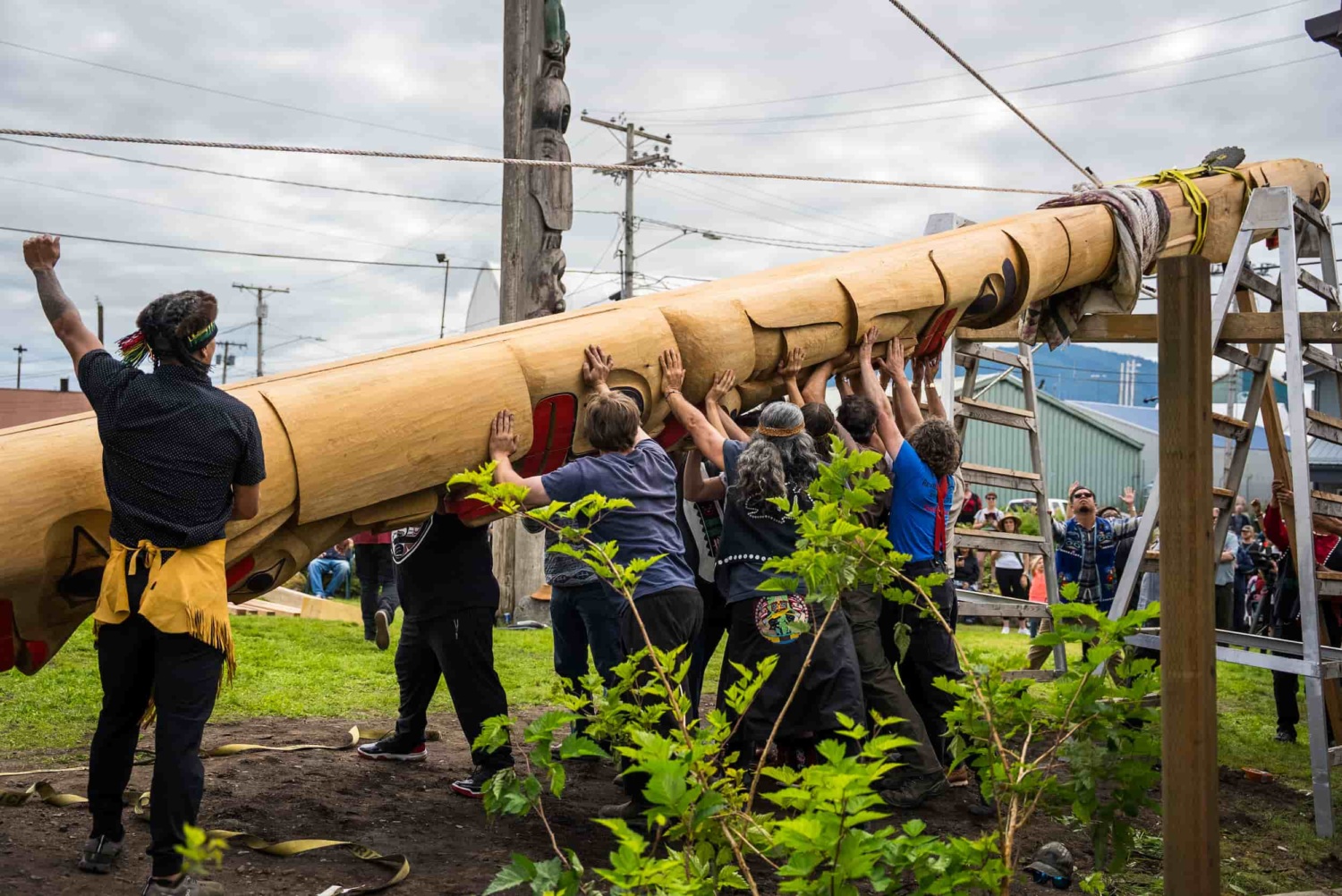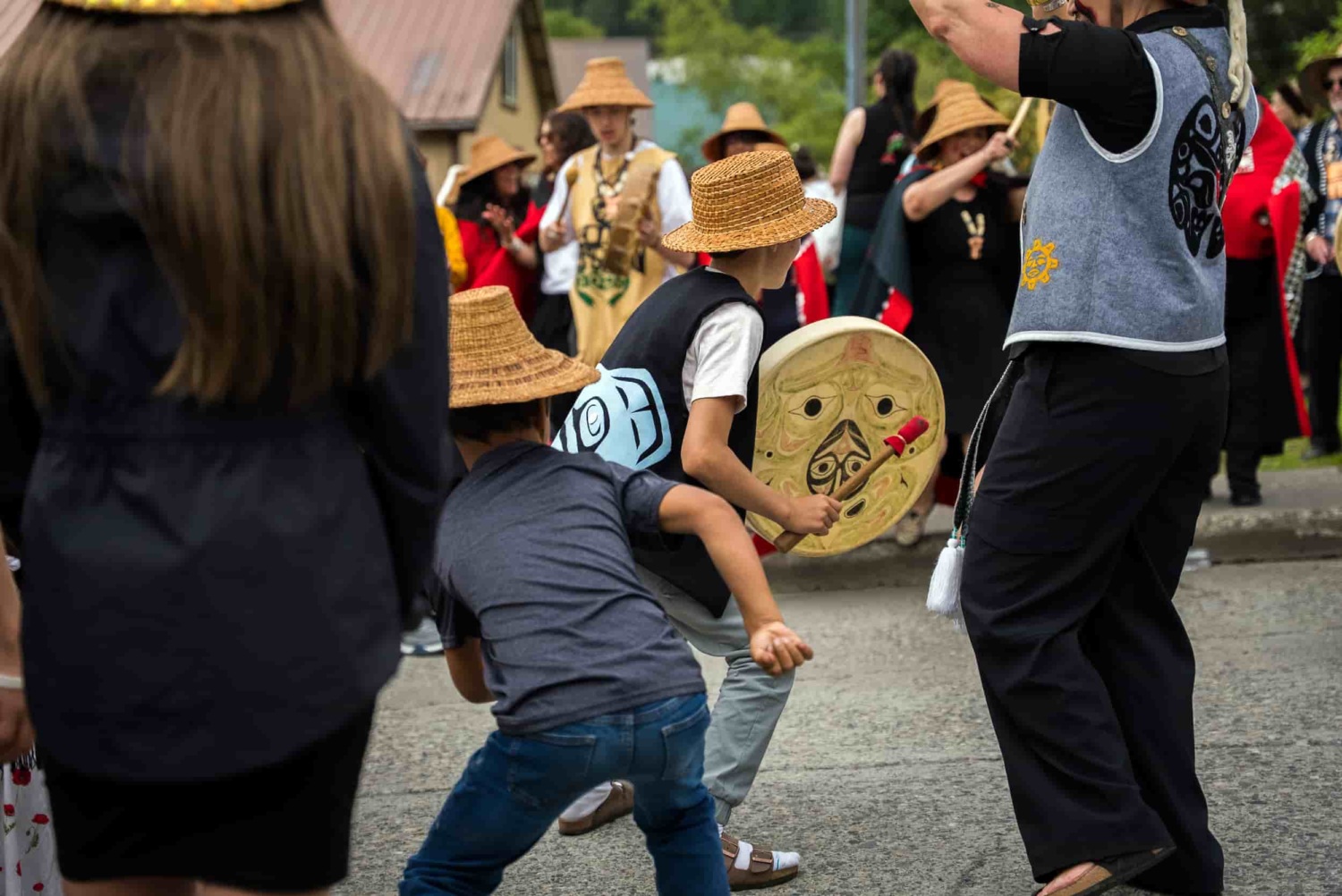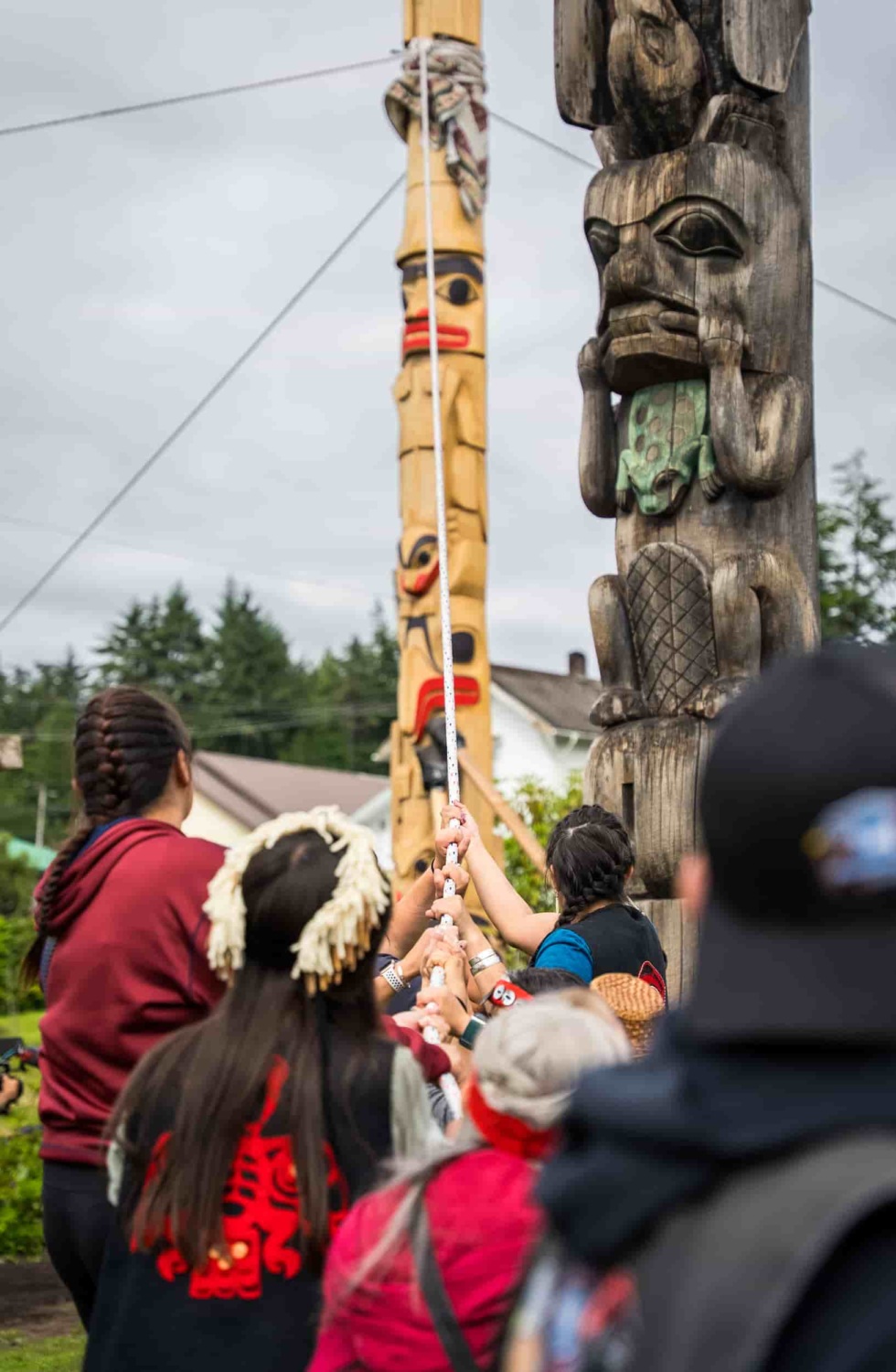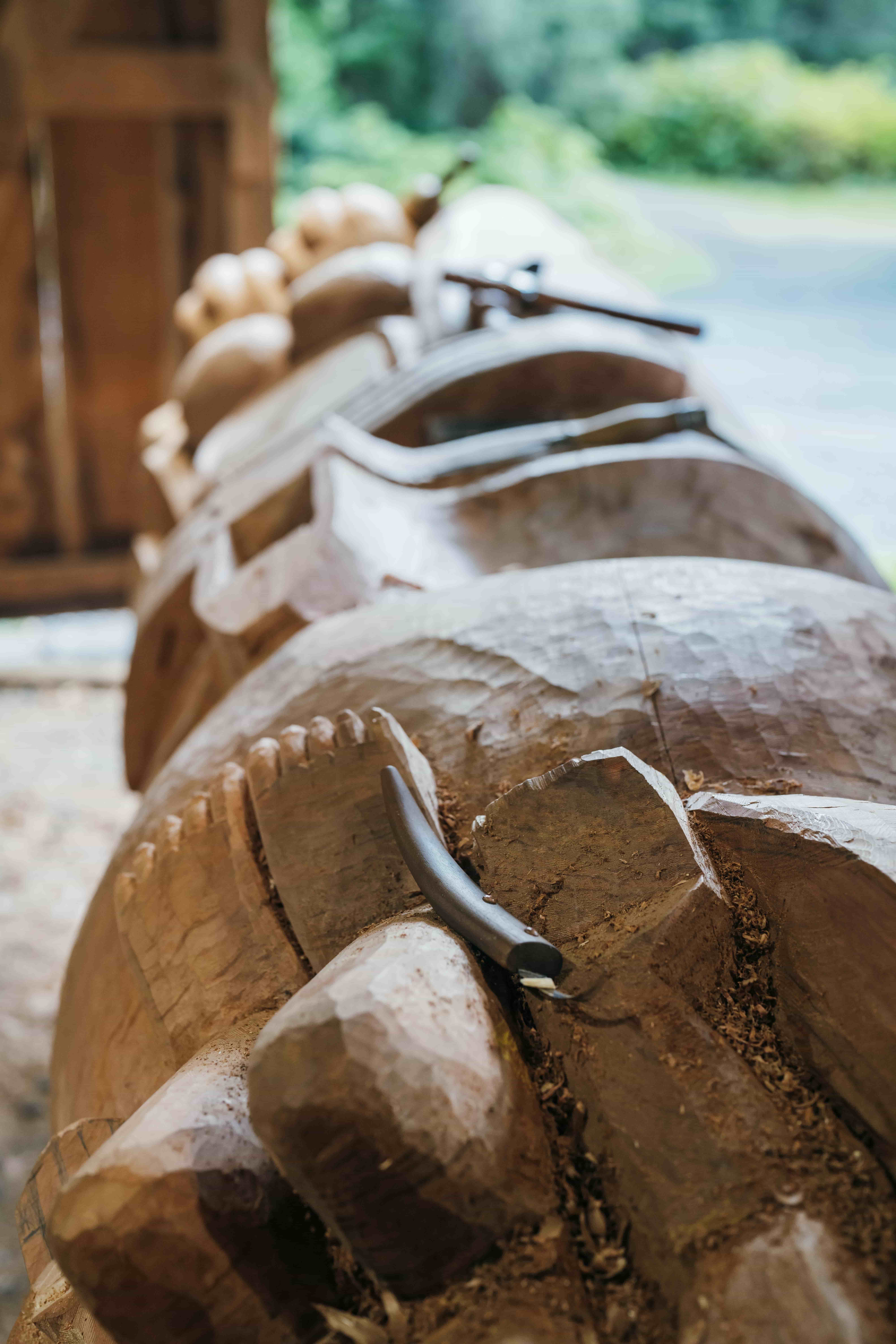After 38 years, during July 18th and 19th, 2025, five new totem poles were raised in Ḵaachx̱ana.áakʼw (Wrangell, Alaska) while other communities were readying themselves to raise more.
The event was the third phase of a broader and ongoing cultural resurgence that began with the renovation and rededication of Chief Shakes Tribal House in 2013 followed by the dedication of a new carving facility in 2015.
“This is a historical event for the community of Wrangell, and specifically the Native Community,” DaNika-Rae Smalley, Tsaxhk’ Tlaa (Naanya.aayi’, Lingít), who runs the Museum Collection for the City and Borough of Wrangell, Alaska, said of the pole raisings.
“Our culture is being revitalized, our heritage is coming alive again and our ancestors are far from being forgotten,” Smalley added. “The totems that have been carved are a story, a memory, a way for the next generation to remember where they came from and what our ancestors went through for us to be here today.”
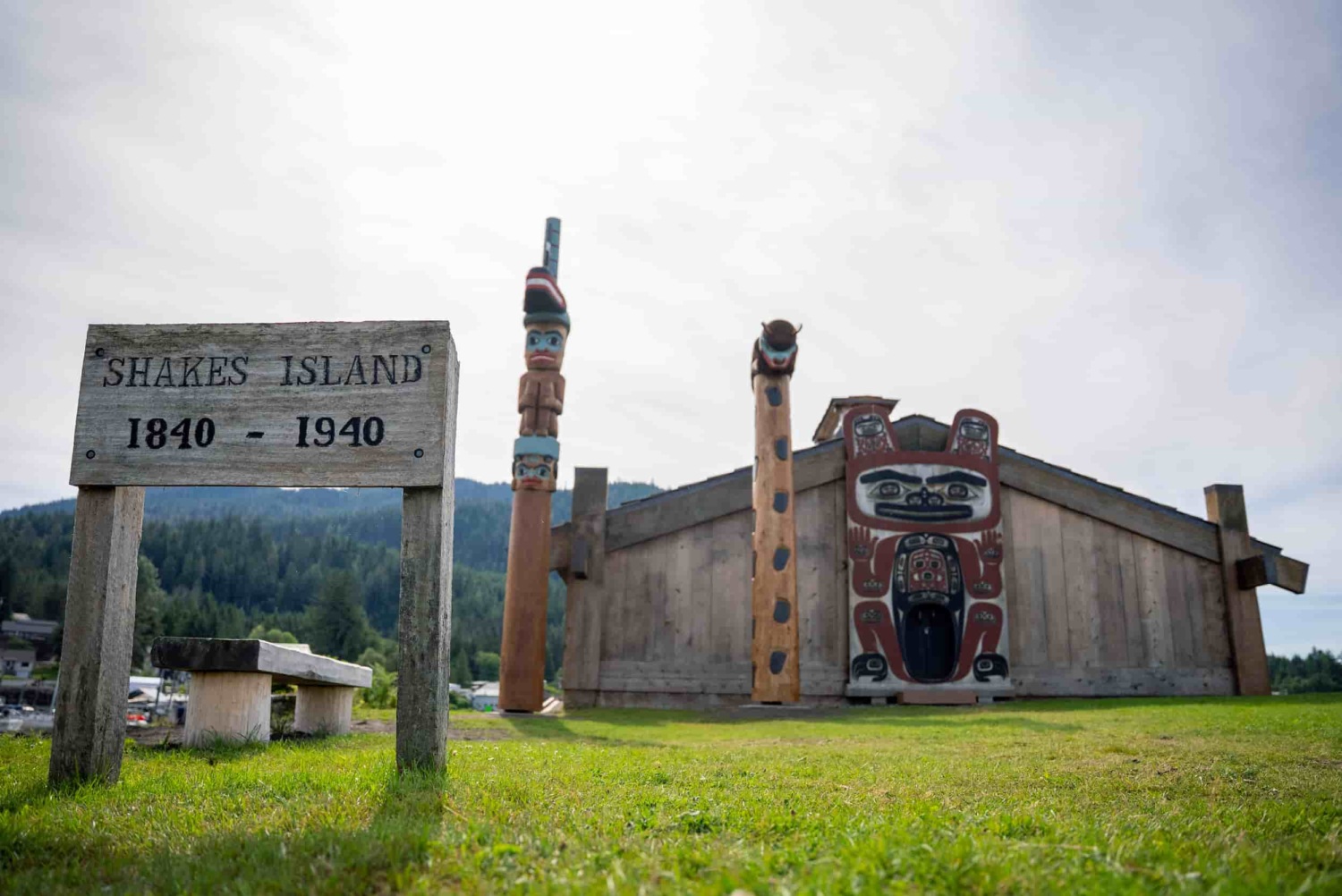
The Shtax’ Kwaan ‘Lingits had originally settled 18 miles south of Kaachxana.aak’w in a village known as Kaasitl Aan, commonly referred to today as Old Town. The village relocated to Kaachxana.aak’w, modern day Wrangell around 1834. The oldest known house posts in existence today, were transported in dugout canoes to Kaachxana.aak’w. [Renowned master carver of his time Kadjisdu.axtc, a carver from the Kik.adi clan, carved the original house posts of Chief Shakes Tribal House.]
During this time, other totems were likely transported from Old Town. As was the old way, replica poles were carved and erected in Kaachxana.aak’w. 30-40 totem poles stood in the village when it was first photographed by Eadweard Muybridge in 1868. By the 1930’s the knowledge of carving was almost lost and many of the totems were decaying.
The first rebuilding of Chief Shakes Tribal House with CCC funds in 1940 brought the first resurgence of the art of carving back to Wrangell. Nine replica poles were carved at this time. The next resurgence came when Sealaska Corporation purchased land from the Alaska Pulp Corporation to keep it in Native ownership. The land was the historic site of the Kiks.adi clan in Kaachxana.aak’w. Four totem poles were raised during the 1987 rededication and the park was named Kiks.adi Totem Park.

“This is our way to pay homage to our ancestors,” Frank Nix, a 28-year-old Haida man who skippered a canoe from his small village of Kasaan to support the pole raisings, explained.
For Nix, this is a way to connect to how things used to be done.
“As Haida People, we are canoe people. Being in a tluu (canoe), and the suffering that comes during a long journey helps me to connect.”
Nix recognizes the value the canoe journey had on making the statement that “we are here.”
“We have to find ways to revitalize and renew our culture, which lends us to protecting the trees,” Nix added. “We are as much a part of the trees as they are of us. We were here before these islands had trees, so we grew up together.”
Just as journeying canoes landed on Shakes Island where several of the new totems were raised, the sun broke through a thick layer of clouds.

The local Tribal government, Wrangell Cooperative Association, helped support the clans who hosted the events along with re-establishing the master-apprentice carver relationships. Ken Hoyt, Neish (Teiḵweidí, Taant’aḵwáan), Board Member of the Wrangell Cooperative Association, explained the Tlingit and land were connected. Upholding traditional values, when a tree is harvested for a totem, a ceremony is held giving thanks to that tree for its life. Hoyt said that the Native Community of Ḵaachx̱ana.áakʼw are “rebuilding the forest of poles.”

With your support, Home Planet Fund will be able to support ongoing cultural revitalization efforts like this across Southeastern Alaska, where our partners have lived since time immemorial.
